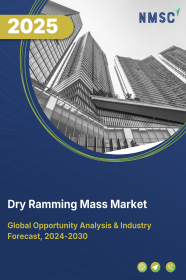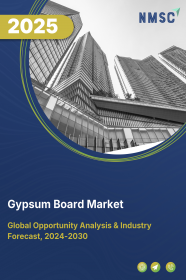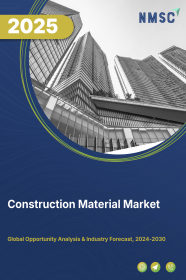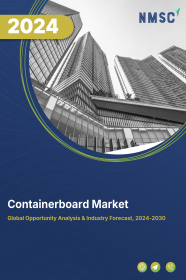
Dry Ramming Mass Market by Type (Alumina Based (High-Purity Alumina and Low-Purity Alumina, Silica Based (Quartz-Based and Fused Silica-Based), and Magnesia Based, and Others), by Application (Furnace Linings (Electric Arc Furnaces (EAF), Induction Furnaces, and Blast Furnaces), Foundry, Steel Production, and Others), by End User (Steel Industry, Foundry Industry, Non-Ferrous Metal Industry, Cement Industry, Glass Industry, and Others)– Global Opportunity Analysis and Industry Forecast 2025-2030
Dry Ramming Mass Industry Overview
The global Dry Ramming Mass Market size was valued at USD 2.75 billion in 2024, and is expected to be valued at USD 2.94 billion by the end of 2025. The industry is predicted to reach USD 4.08 billion by 2030 with a CAGR of 6.8% from 2025-2030.
The market, a cornerstone of the refractory industry, is experiencing robust market growth driven by industrial expansion, energy efficiency demands, and infrastructure development. Key drivers include the rapid growth of metal and steel industries, increasing focus on energy-efficient refractory solutions, and the surge in infrastructure projects fueled by urbanization, all amplifying market demand for durable furnace linings. However, moisture absorption during storage restrains market expansion by complicating material handling. Opportunities lie in replacing traditional refractory coatings with advanced dry ramming materials, particularly for tundish linings, enhancing efficiency and performance. Leading players like Raghav Productivity Enhancers, TRL Krosaki Refractories Limited, and Raj Global Ramming Mass are leveraging these trends to drive innovation and meet evolving market trends.
Rapid Expansion of Metal and Steel Industries Fuels Dry Ramming Mass Industry Growth
The rapid expansion of metal and steel industries significantly drives dry ramming mass market growth, a critical refractory material for lining furnaces and melting vessels. Its role in providing thermal insulation and protection against high temperatures and chemical reactions is vital for steelmaking. The World Steel Association reports global crude steel production reached 144.5 million tonnes in December 2024, a 5.6% increase from December 2023. This surge underscores persistent market demand for silica ramming mass in steel production. Companies like Raghav Productivity Enhancers, serving clients across 35 countries, capitalize on this demand by ensuring reliable supply chains, positioning the market for sustained market expansion as steel industries continue to grow.
Rising Focus on Energy Efficiency Boosts Dry Ramming Mass Market Demand
The global emphasis on energy efficiency is a powerful driver of market demand for dry ramming mass market expansion, which enhances thermal insulation and optimizes energy consumption in high-temperature processes. According to the Industrial Energy Agency, in 2023, governments worldwide introduced policies to double energy efficiency progress, targeting a one-third reduction in energy bills in advanced economies and 50% of CO2 reductions by 2030. These initiatives align with market trends toward sustainability, increasing the adoption of refractory ramming mix in steel and foundry applications. Industry players should highlight these energy-saving benefits, as seen in Raj global ramming mass promotion of durable linings, to meet regulatory and environmental demands, further fueling market growth.
Expansion of Infrastructure Projects and Urbanization Propels Industry Growth
The proliferation of infrastructure projects and urban developments, including highways, bridges, and high-rise buildings, drives market growth by boosting steel production and, consequently, market demand for dry ramming mass. The World Bank Group notes that global construction investment grew from USD 23.59 trillion in 2018 to USD 27.81 trillion in 2023, a 18.6% increase. This construction surge, particularly in urbanizing regions, amplifies the need for silica ramming mass in steelmaking for infrastructure materials. Companies like TRL Krosaki leverage this trend by supplying high-performance refractories, aligning with market trends toward urbanization-driven industrial expansion, ensuring the market’s continued upward trajectory.
Moisture Absorption Challenges Restrain Market Growth
Moisture absorption during storage, especially in humid conditions like monsoon seasons, poses a significant restraint on market growth for furnace repair materials. This vulnerability can degrade material integrity and binder efficacy, requiring storage in cool, dry environments and preheating to 60–70°C before use, which increases handling costs and complexity. These challenges hinder market expansion by affecting performance consistency. Industry players must invest in moisture-resistant packaging and provide detailed storage and preheating guidelines, as exemplified by the Standard Operating Procedure for preheating Daka Ramming Mass, to mitigate this barrier and support market scalability.
Advanced Tundish Lining Solutions Create Significant Opportunity for Dry Ramming Mass Industry Growth
The replacement of traditional refractory coatings with dry ramming materials, particularly in tundish linings for steel production, offers a transformative opportunity for market expansion. These materials provide rapid installation, eliminate baking requirements, and deliver superior corrosion resistance and molten steel purification, driving market demand. TRL Krosaki highlights their performance advantages, such as reduced steel shell temperatures and enhanced efficiency, over conventional coatings. Companies should market these benefits through case studies, as supported by RHI Magnesita’s 2024 “4PRO” sustainable refractory solutions, positioning dry ramming mass as a cost-effective, high-performance solution to capture market trends in modern steelmaking.
Market Segmentations and Scope of the Study
The dry ramming mass market report is segmented on the basis of product type, application, end-users, and region. Based on product type, the market is classified into alumina-based, silica-based, magnesia-based, zirconia-based, and others. The alumina-based segment is further divided into high-purity alumina and low-purity alumina. The silica-based segment is further segmented into quartz-based and fused silica-based. The magnesia-based segment is further divided into magnesia-carbon and magnesia-chrome.
The zirconia-based segment is further segmented into chromite-based and alumina-magnesia-carbon. On the basis of application, the market covers furnace linings, foundry, steel production, non-ferrous metal production, and others. Furnace linings are further segmented into electric arc furnaces (EAF), induction furnaces, and blast furnaces. Steel production is further divided into continuous casting and tundish linings.
Non-ferrous metal production is further segmented into aluminum smelting and copper smelting. On the basis of end-users, the market is categorized into the steel industry, foundry industry, non-ferrous metal industry, cement industry, glass industry, and others. Regional breakdown and analysis of each of the mentioned segments include North America, Europe, Asia-Pacific, and Rest of the World (RoW).
Geographical Analysis
The Asia-Pacific region, led by industrial powerhouses like China and India, commands a dominant share of the dry ramming mass market share, propelled by the rapid expansion of the iron and steel industry and a growing focus on energy efficiency. China, the world’s largest steel producer, generated 76 million tonnes of crude steel annually in 2024, driving robust market demand for refractory ramming mass to support furnace linings in steelmaking. India, a key exporter, serves global steel and foundry clients through companies like Raghav Productivity Enhancers, reinforcing the region’s production and consumption hub status. Additionally, energy efficiency policies, such as India’s USD 78 billion allocation for 2026–2030 to achieve Net Zero Emissions by 2050, promote dry ramming mass for thermal insulation in energy-intensive industries like steel, aligning with market trends toward sustainability. Intense competition and economic volatility pose challenges, but Asia-Pacific’s industrial strength ensures sustained market growth.
Europe’s market flourishes due to consistent demand from steel-reliant sectors like automotive and construction, coupled with advancements in sustainable refractory solutions. The region’s Ferronickel market, tied to stainless steel production, underscores the need for ramming mass in furnace linings, fueling market demand. Innovations, such as RHI Magnesita’s 2024 “4PRO” sustainable refractory initiatives, enhance market growth by meeting environmental standards. Economic slowdowns and stringent regulations increase compliance costs, yet Europe’s emphasis on eco-friendly industrial practices supports market trends toward high-performance, durable refractories, positioning the region as a significant consumption market.
North America, encompassing the U.S. and Canada, exhibits steady market growth in the dry ramming mass sector, driven by a burgeoning manufacturing sector and substantial infrastructure investments. The U.S. manufacturing industry, with a 2023 output of USD 2.93 trillion, amplifies market demand for refractory materials in steel and foundry operations, as reported by the National Association of Manufacturers. Additionally, infrastructure projects, including bridges and highways, supported by Canada’s USD 180 billion Investing in Canada Plan over 12 years, boost steel production and the need for ramming mass for furnace linings. High production costs and emission regulations present challenges, but strategic partnerships, like Raghav’s 2022 collaboration with Capital Refractories, align with market trends to meet North America’s industrial needs.
The Rest of the World (RoW), including Latin America, the Middle East, and Africa, shows emerging potential in the market, driven by expanding industrial activities and active participation in global trade networks. Growing construction and manufacturing sectors in Latin America fuel market demand for steel and refractory materials, while export intelligence platforms highlight ramming mass trade across diverse economies. Increasing investments in industrial infrastructure in the Middle East support market growth. Limited industrial infrastructure and economic constraints pose challenges, yet opportunities in emerging markets and rising steel demand position RoW as a dynamic contributor to global market trends.
Strategic Developments by Key Market Players in the Industry
Leading players in the dry ramming mass industry, including Saint-Gobain, RHI Magnesita, Vesuvius, Raghav Productivity Enhancers, and TRL Krosaki, drive market growth through innovation, strategic expansions, and sustainability, fueled by global steel production (China’s 76 million tonnes in 2024) and infrastructure investments like Canada’s USD 180 billion plan. Saint-Gobain’s 2024 EPD-certified Magmalox and Raghav’s 2023 Newai facility enhance market demand for eco-friendly refractories and boost export capabilities. Vesuvius advances alumina formulations, and TRL Krosaki targets tundish linings, aligning with market trends toward efficiency. Recent developments, like INTOCAST’s 2024 Tennessee plant and Saint-Gobain’s 2021 Vesuvius acquisition, underscore capacity growth, though supply chain disruptions and raw material price volatility challenge margins.
A Porter’s Five Forces analysis reveals high rivalry among players, moderate buyer and supplier power due to steelmakers’ bulk purchases and raw material volatility, low-to-moderate entry barriers from high capital needs, and moderate substitute threats from ceramic fibers, mitigated by ramming mass’s thermal stability. Companies navigating these dynamics through R&D and local sourcing can capitalize on rising market demand in steel and foundry sectors.
Key Benefits
-
The report provides quantitative analysis and estimations of the market from 2025 to 2030, which assists in identifying the prevailing market opportunities.
-
The study comprises a deep-dive analysis of market including the current and future trends to depict prevalent investment pockets in the market.
-
Information related to key drivers, restraints, and opportunities and their impact on the market is provided in the report.
-
Competitive analysis of the players, along with their market share is provided in the report.
-
SWOT analysis and Porters Five Forces model is elaborated in the study.
-
Value chain analysis in the market study provides a clear picture of roles of stakeholders.
Dry Ramming Mass Market Key Segments
By Product Type
-
Alumina-Based
-
High-Purity Alumina
-
Low-Purity Alumina
-
-
Silica-Based
-
Quartz-Based
-
Fused Silica-Based
-
-
Magnesia-Based
-
Magnesia-Carbon
-
Magnesia-Chrome
-
-
Zirconia-Based
-
Chromite-Based
-
Alumina-Magnesia-Carbon
-
By Application
-
Furnace Linings
-
Electric Arc Furnaces (EAF)
-
Induction Furnaces
-
Blast Furnaces
-
-
Foundry
-
Steel Production
-
Continuous Casting
-
Tundish Linings
-
-
Non-Ferrous Metal Production
-
Aluminum Smelting
-
Copper Smelting
-
-
Others
By End-Users
-
Steel Industry
-
Foundry Industry
-
Non-Ferrous Metal Industry
-
Cement Industry
-
Glass Industry
-
Others
By Region
-
North America
-
The U.S.
-
Canada
-
Mexico
-
-
Europe
-
The U.K.
-
Germany
-
France
-
Italy
-
Spain
-
Denmark
-
Netherlands
-
Finland
-
Sweden
-
Norway
-
Russia
-
Rest of Europe
-
-
Asia-Pacific
-
China
-
Japan
-
India
-
South Korea
-
Australia
-
Indonesia
-
Singapore
-
Taiwan
-
Thailand
-
Rest of Asia-Pacific
-
-
Rest of the World (RoW)
-
Latin America
-
Middle East
-
Africa
-
Key Players
-
Saint-Gobain
-
Dense Refractories Co Ltd
-
Imperial World Trade Private Limited
-
Raghav Productivity Enhancers Ltd
-
Refcast Corporation
-
Henan Xinmi Changxing Refractory ramming mass Co. Ltd.
-
Casco Specialty Products Inc.
-
Gita Refractories Private Limited
-
Shenghe Refractories
-
RHI Magnesita N.V.
-
Zhengzhou RongSheng Refractory Co. Ltd.
-
Agrm International Engineering Co., Ltd
-
Pratap Corporation
-
Sino-Foundry Refractory (Jiangsu) Co., Ltd.
-
Zhengzhou Caihua Kiln Masonry Installation Co., Ltd.
Report Scope and Segmentation
|
Parameters |
Details |
|
Market Size in 2024 |
USD 2.75 billion |
|
Revenue Forecast in 2030 |
USD 4.08 billion |
|
Growth Rate |
CAGR of 6.8% 2025 to 2030 |
|
Analysis Period |
2024–2030 |
|
Base Year Considered |
2024 |
|
Forecast Period |
2025–2030 |
|
Market Size Estimation |
Billion (USD) |
|
Growth Factors |
|
|
Countries Covered |
28 |
|
Companies Profiled |
15 |
|
Market Share |
Available for 10 companies |
|
Customization Scope |
Free customization (equivalent to up to 80 working hours of analysts) after purchase. Addition or alteration to country, regional, and segment scope. |
|
Pricing and Purchase Options |
Avail customized purchase options to meet your exact research needs. |

















 Speak to Our Analyst
Speak to Our Analyst





















